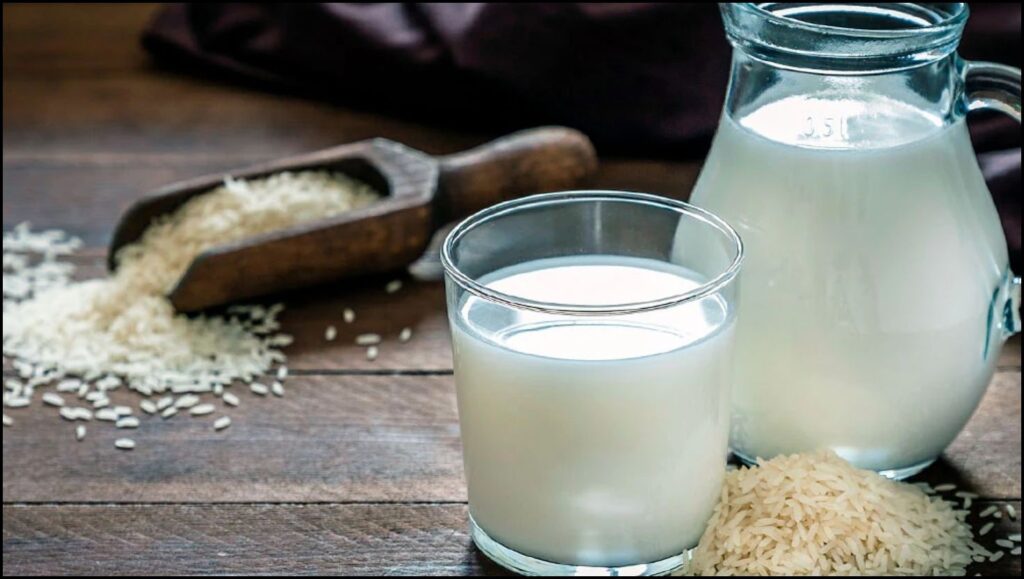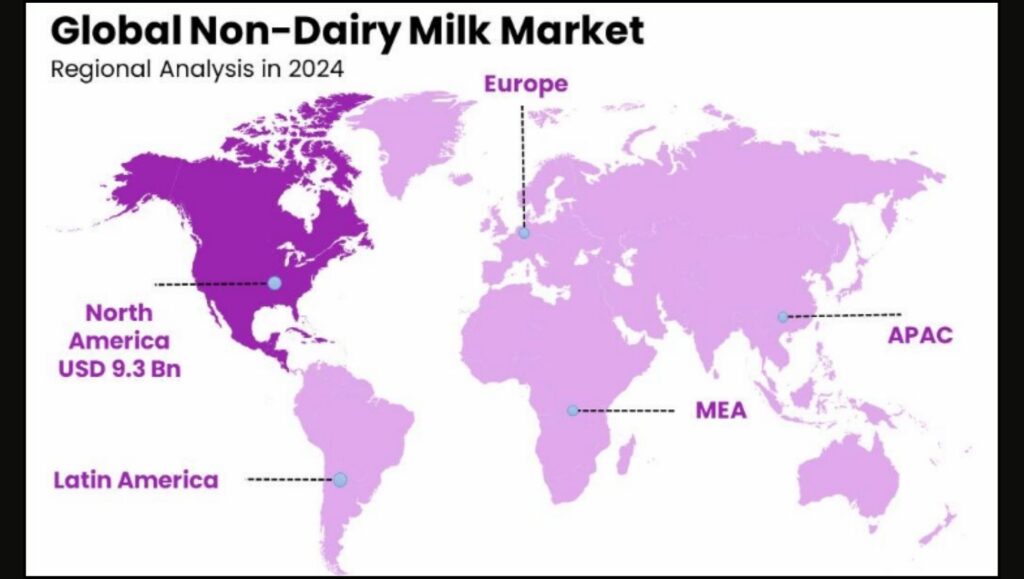The global rice milk market is experiencing significant growth, driven by increasing consumer awareness of lactose intolerance, dairy allergies, and the rising popularity of plant-based diets. While precise country-specific production figures for rice milk itself are not widely and consistently reported by international bodies, available market analysis strongly indicates that the Asia-Pacific region, particularly countries with robust rice production and a growing interest in dairy alternatives, holds the largest market share in both consumption and, consequently, production. This trend underscores a broader shift in dietary preferences worldwide.

The Asia-Pacific region has emerged as a dominant force in the global rice milk market, leading both production and consumption. This surge is primarily driven by growing health consciousness, increased awareness of lactose intolerance, and the burgeoning popularity of plant-based dietary trends across its diverse populations, marking a significant shift in the dairy alternatives landscape.
The Ascendance of Rice Milk in the Global Market
The global market for plant-based milk alternatives has expanded significantly in recent years, with rice milk carving out an important niche. While often overshadowed by popular choices like almond and oat milk, rice milk offers unique benefits, including its hypoallergenic properties and mild flavor, making it suitable for a broad range of consumers, particularly those with nut or soy allergies. The lack of specific, consistently reported national production volumes for rice milk makes definitive statements challenging, yet comprehensive market analyses consistently point to the Asia-Pacific region as the primary hub for its manufacturing and consumption.
Market research firms highlight the Asia-Pacific’s substantial contribution to the global rice milk sector. According to a report by Persistence Market Research, the Asia-Pacific region is estimated to hold approximately 30.2% of the global rice milk market share in 2025. This strong position is intrinsically linked to the region’s vast rice production capabilities and a deep-rooted cultural reliance on rice as a staple food. Countries like China, India, Thailand, Indonesia, and Vietnam are among the world’s largest rice producers, providing an abundant and cost-effective raw material supply for rice milk manufacturing.
Regional Drivers and Market Dynamics
The growth of the rice milk market in Asia-Pacific is multifaceted. A significant factor is the high prevalence of lactose intolerance among Asian populations, which historically has led to lower dairy consumption compared to Western countries. As consumers seek alternatives to traditional dairy, rice milk presents a familiar and digestible option. Furthermore, the increasing adoption of vegan and vegetarian diets, coupled with rising disposable incomes and urbanization, has fueled demand for diverse plant-based products.
“The Asia-Pacific region’s dominance in rice milk isn’t just about production capacity; it’s also deeply rooted in cultural dietary patterns and a rising awareness of health and wellness,” stated Dr. Anya Sharma, a senior fellow specializing in global food systems at the Brookings Institution. “The indigenous availability of rice, combined with a historical predisposition towards plant-based diets in many parts of Asia, creates a fertile ground for rice milk’s growth.”
The Chinese market, for instance, has demonstrated substantial growth in the plant-based milk sector. According to a GlobeNewswire report, the Chinese market dominated the Asia-Pacific rice milk market by country in 2023 and is projected to continue its dominance, reaching a market value of $148.4 million by 2031. This growth is further propelled by the expansion of e-commerce platforms, making plant-based products more accessible to urban, health-conscious consumers.

Key Players and Innovation
Leading global and regional food companies are actively investing in the rice milk sector, introducing new products and expanding their distribution networks. Major players identified in the global rice milk market include Vitasoy International Holdings (with significant presence in Asia and Australia), The Hain Celestial Group (U.S.), Pureharvest (Australia), SunOpta Inc. (Canada), and The Bridge S.R.L. (Italy). Many of these companies have a global reach but also tailor their products to regional tastes and preferences.
Innovation in the rice milk segment includes the development of flavored varieties such as vanilla, chocolate, and matcha, targeting a broader consumer base, including children and young adults. For example, Vitasoy introduced chocolate rice milk in Singapore and Hong Kong, aiming to capture a larger share of the plant-based dairy industry in the region. This strategic diversification helps to appeal to a wider demographic beyond those with dietary restrictions.
Challenges and Future Outlook
Despite its growth, the rice milk market faces certain challenges. Compared to soy and almond milk, rice milk’s nutritional profile is generally lower in protein, which can be a consideration for some consumers. Additionally, its adoption is still comparatively limited in some regions, even where rice is abundant. Efforts to enhance the nutritional value of rice milk through fortification and to promote its health benefits are ongoing.
The plant-based milk market as a whole is projected to continue its upward trajectory. The global plant-based milk market size was estimated at USD 20,838.8 million in 2024 and is projected to reach USD 32,353.4 million by 2030, growing at a Compound Annual Growth Rate (CAGR) of 7.4% from 2025 to 2030, according to Grand View Research. While almond and oat milk currently hold larger market shares within the broader plant-based category, rice milk’s unique attributes and strong regional foundations in Asia-Pacific position it for sustained growth.
The future of rice milk production will likely see continued innovation in product development, expanded market penetration, and strategic partnerships between manufacturers and distributors to capitalize on the increasing global demand for lactose-free and plant-based options. Asia-Pacific’s role as a leading producer and consumer is expected to strengthen, solidifying its position at the forefront of this evolving dietary trend.
India Solidifies Position as Largest Ghee Producer in the World Amid Growing Global Demand
